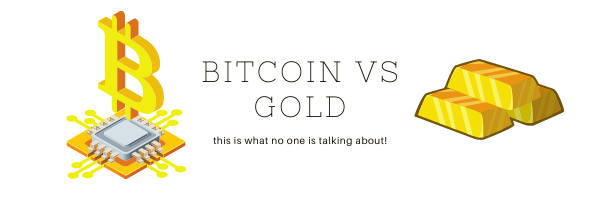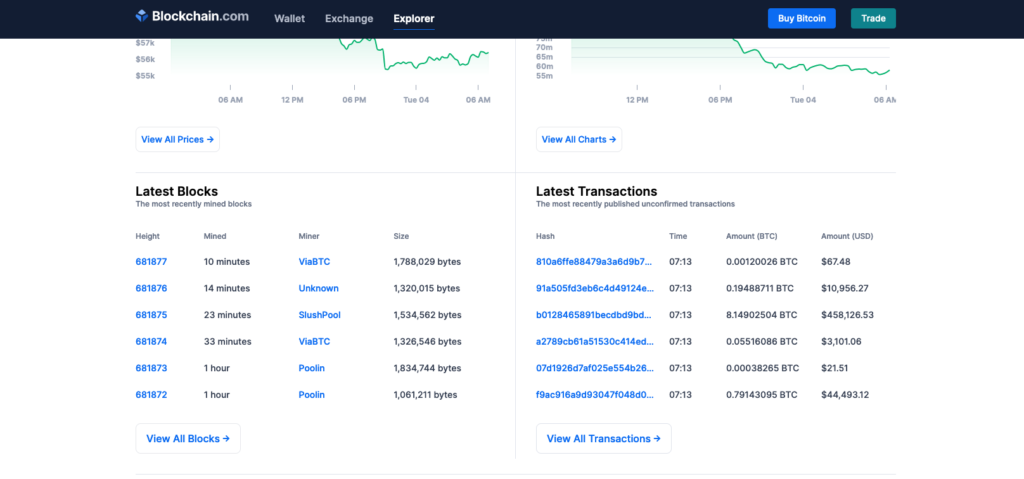My journey with Chia started on 5/20/2021 at around noon, so that’s 105 days including today that I’ve been running a Chia “farm” as it is called. I won’t tell you that it’s hard, it’s really not–unless you try to go really big as I did.
Let’s go back to the beginning of May when it launched. Why did I get involved? Was it the price? Well, yes and no. The price of Chia was attractive but the price isn’t what attracted me to it. It was non-GPU-based mining. I wanted to diversify what my company is mining. I had no idea that the price would tank very quickly after the bull run that we experienced in crypto the first couple of months of this year. We could do no wrong then.

GPU Mining is Bad (Really?)
I’m mining BTC and ETH of course, but back in May, there was a lot of talk about clean energy and how GPU mining is somehow wasteful and wrong to do. That talk has seemed to die down a bit–but I digress. Chia farming isn’t GPU-based. In fact, no GPU is needed at all if you’re running headless servers. You can even go very, very economical and run a Chia farm using a Raspberry Pi. You won’t be able to plot with a Pi, at least not that I know of–but, I went the other way with it. I started buying server gear. I went from consumer motherboards to boards that can support XEON processors with lots of cores. The more cores, the more you can plot at the same time. These servers do use more power than say your average desktop, but considerably less than say, 8 RTX 3090s.
Clean Mining
Sticking with the philosophy of more from less and the desire to broaden the range of cryptocurrency I was mining. I started investigating other “mining” platforms. I’d been looking at Livepeer(LPT), Helium Network(HNT), and Machine Coin(MXC) as well, and I decided to move on HNT, MXC, and XCH. Currently, I’m mining MXC, XCH with my HNT “miners” on the way–that should be here next month. I didn’t start running LPT because instead of a stock version of Linux, I’m running my ETH miners using Minerstat’s mOS, a custom build version of Ubuntu that is used for professional CPU/GPU mining.
The other thing that I liked and still do like about XCH is that it’s being run by guys like Gene Hoffman, Mitch Edwards (former founder and CEO of eMusic.com and Vindica the former acting-CEO of Overstock.com, respectively) and Chia’s founder, Bram Cohen. Bram’s past work has included technologies like BitTorrent which he developed in 2001. The other people were hand-picked and include the former HDD storage chief from Intel.
So, clean “mining, the great company behind it, and a new paradigm in regards to what you’re doing when you “mine.” In this case, it’s called farming, but here’s what Chia says it is:
“Chia Network is building a better blockchain and smart transaction platform which is more decentralized, more efficient, and more secure.
Chialisp is Chia’s new smart transaction programming language that is powerful, easy to audit, and secure. The blockchain is powered by the first new Nakamoto style consensus algorithm since Bitcoin launched in 2008. Proofs of Space and Time replace energy intensive “proofs of work” by utilizing unused disk space.
Chia Network supports the development and deployment of the Chia blockchain globally. Chia Network supports chia developers and supports the enterprise use of chia with software support and chia lending.”
https://www.chia.net/about/
Proof of Work vs Proof of Space
There are two things to note here.
- Chia has its own programming language, Chialisp. So, like Ethereum which uses a language called Solidity. You can write smart contracts and build applications similarly to the way that you’d do the same thing on the Ethereum blockchain. This also means you can create new cryptocurrencies with Chialisp. Chia is a platform like Ethereum, I like this you can build on it just like ETH.
- Chia isn’t vulnerable to a 51% attack the way Bitcoin and other Proof of Work(PoW) cryptocurrencies. Instead, Chia uses a new algorithm called Proof of Space and Time(PoST).
Background on 51% Attacks
“A 51% attack is an attack on a blockchain, which is a type of digital database in ledger form. With blockchain technology, information is collected together in groups or blocks and linked together to create a chain of data. In cryptocurrency trading, blockchain is used to record approved transfers of digital currencies and the mining of crypto coins or tokens.
With Bitcoin for example, “miners” can attempt to add blocks to the chain by solving mathematical problems through the use of a mining machine. These machines are essentially a network of computers. If miners succeed in adding a block to the chain, they receive Bitcoins in return.
The speed at which all the mining machines within the network operate is the Bitcoin hashrate. A good hashrate can help gauge the health of the network.
A 51% attack occurs when one or more miners takes control of more than 50% of a network’s mining power, computing power or hashrate. If a 51 percent attack is successful, the miners responsible essentially control the network and certain transactions that occur within it.”
https://www.sofi.com/learn/content/51-attack/
Proof of Space and Time
Reading through Chia’s Whitepaper, which they call a “Green Paper” reads like a doctoral dissertation in computer science rather than a typical business document. It’s dense and hard to understand. I had to print it out and read it line by line, over and over again to really understand it.
Earn Crypto with Data Storage
The easiest way to think about Proof of Space and Time (PoST) is that, unlike Bitcoin and Ethereum where computation (and lots of it) is necessary, data storage is used to earn cryptocurrency. PoST is very similar to Proof of Work (PoW), but it doesn’t use memory draining functions that create bottlenecks–in other words, the computers mining PoW have to access things in memory very fast and often, which takes a lot of power and fast computers; PoST is based on the amount of memory (storage) required, not the function of accessing the memory. I know this sounds a bit simplistic, but that’s because, at the heart of it, it is quite “simple.” There isn’t a whole lot going on when it comes to the general concepts. I’ve found this situation a number of times in computer science, we just sometimes want things to be more complicated than they have to be.
After the release of Bitcoin, alternatives to its PoW mining mechanism were researched and PoS was studied in the context of cryptocurrencies. Proofs of space are seen as a fairer and greener alternative by blockchain enthusiasts due to the general-purpose nature of storage and the lower energy cost required by storage, but have been criticized for increasing demand for storage. Several theoretical and practical implementations of PoS have been released and discussed, such as SpaceMint, Burstcoin, and Chia.
https://en.wikipedia.org/wiki/Proof_of_space
The XCH saga continues
Now that we are on the same page as to why I got involved with Chia Farming, you can probably see why I’m not ready to throw in the towel when it comes to farming and creating plots for storage. Let’s Pro/Con it out.
Pros:
- Farming Chia makes sense because it provides a product (storage for others) as a side-effect for it’s mining-like activity. It still uses power, but, more at the service of others.
- The Chia network is new, but it’s hearty and robust. It’s market cap is in the billions–it’s being traded on dozens of exchanges and held by thousands.
- It’s a based on a blockchain that’s truly decentralized, just like BTC. The difference is that the project is being managed by a professional team. The blockchain is public and accessible to all.
- The pooling protocol is well thought out and unique. Unique because the individual farmer who “mints” a new block also get’s 25% of the reward. That’s huge.
- Additonally, the pooling protocol allows you to move your plots around quickly from pool to pool, so you don’t have to replot your plots for a specific pool. These innovations are possible because they have a professional development group working non-stop to making the project better and better.
- It was specifically developed to address the problems with potential attacks that BTC and ETH are vulnerable to–it’s more secure.
- Chia is using technologies like Non-Fungible Tokens (NFTs) to make each plot unique. So, it’s using cryptography to secure each plot that I create–making it that much harder to crack.

Cons:
- After 100 days of effort with this project, I have very little XCH to show for it ~0.75 XCH. The main reason is that when pooling started, I got involved with a shady pool that now has been exposed to be scamming people. I now used Flexpool.io which has paid out exponentially more. It’s so new, I didn’t realize the number of Chia pools coming online and I just picked the first one I found rather than doing an indepth review. Since I didn’t have a basis for what I should be earning, it took me a while to figure out I was on the wrong pool. I was using ChiaHub, BTW. Thankfully, the folks on the Chia forum were onto this before me and posted about the inconsistencies they were seeing.
- It’s hard to get the right equipment. I have 10–18TB drives and 30 or so 8TB drives and a handful of other odds and ends. I spent a small fortune on those drives. The price has gone down some since I started, and I have to look at most of my equipment purchases as learning experience. I believe the price will go back up at some point, but until then, the ROI in what I spent will take a while to realize a profit.
- It’s still very new. No one knows about it yet–and we have to admit–most people still don’t understand with Ethereum is… so it’s hard to describe this to others as being a “better Ethereum” when the mainstream hasn’t even grasped the concepts behind ETH.
- The number of people doing this has exploded. While this was a bonanza for everyone who got in on farming early, it led to an explosion in netspace from about 100 pebibytes at launch to over 30 exbibytes today. So that means less bang for your Chia buck. I expect there will be a tipping point in the future that will balance this out. So alas, even though I was early, I didn’t get enough plots out there at the beginning to make a huge amount of XCH from the outset.
Conclusion: Chia for the Win?

I’m a “chia pet” I suppose. It’s become a “hobby-vertical” in my company’s offerings. The difference is that back in 2012 when I started to mine BTC, I now have 10 more years of experience under my belt, mining, building rigs, and learning about this stuff. I also quit mining BTC almost as fast as I started. I didn’t have the foresight to see what BTC was to become. I’ve changed my approach to a lot of things and I’m happy to be working on new innovations in cryptocurrency.
I’m not sure if XCH is going to be as successful as BTC, but I do believe with the leadership that Bram is providing with the whole Chia Network team; good things are indeed on the horizon for this project. I’m going to continue to stick with it and enjoy what I’m doing with the project.
Featured Photo by Joanna Kosinska on Unsplash













